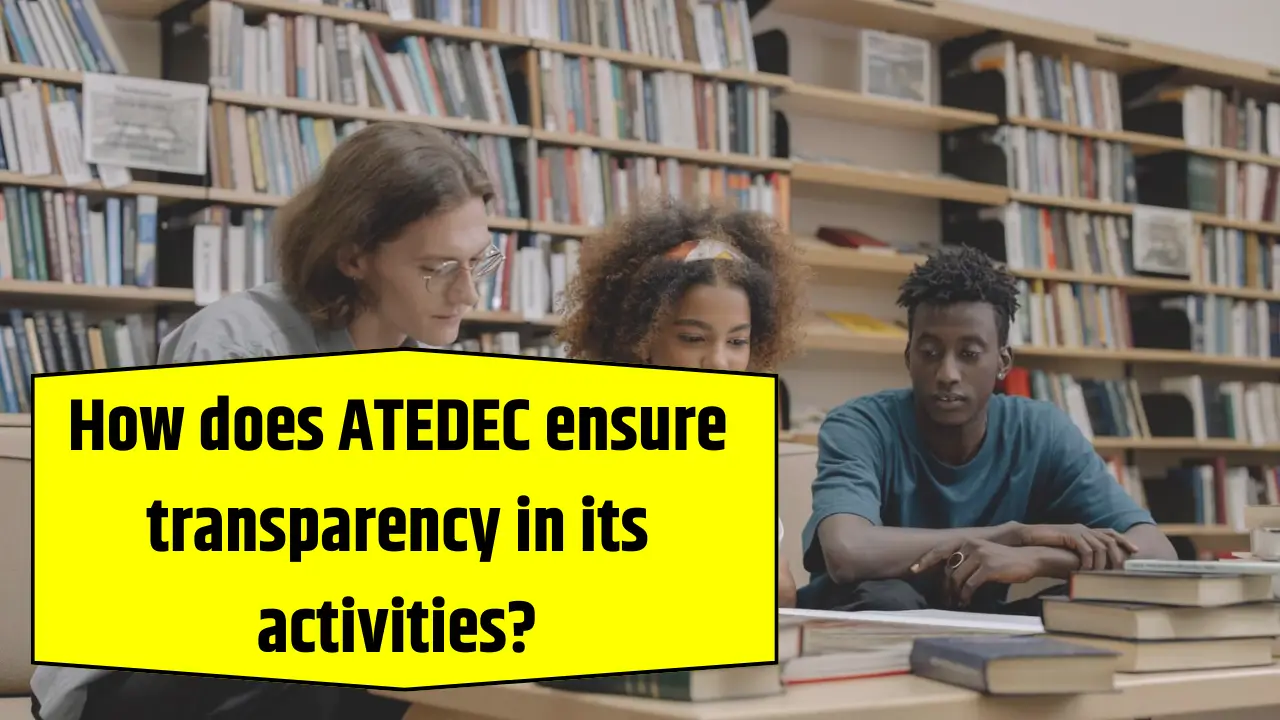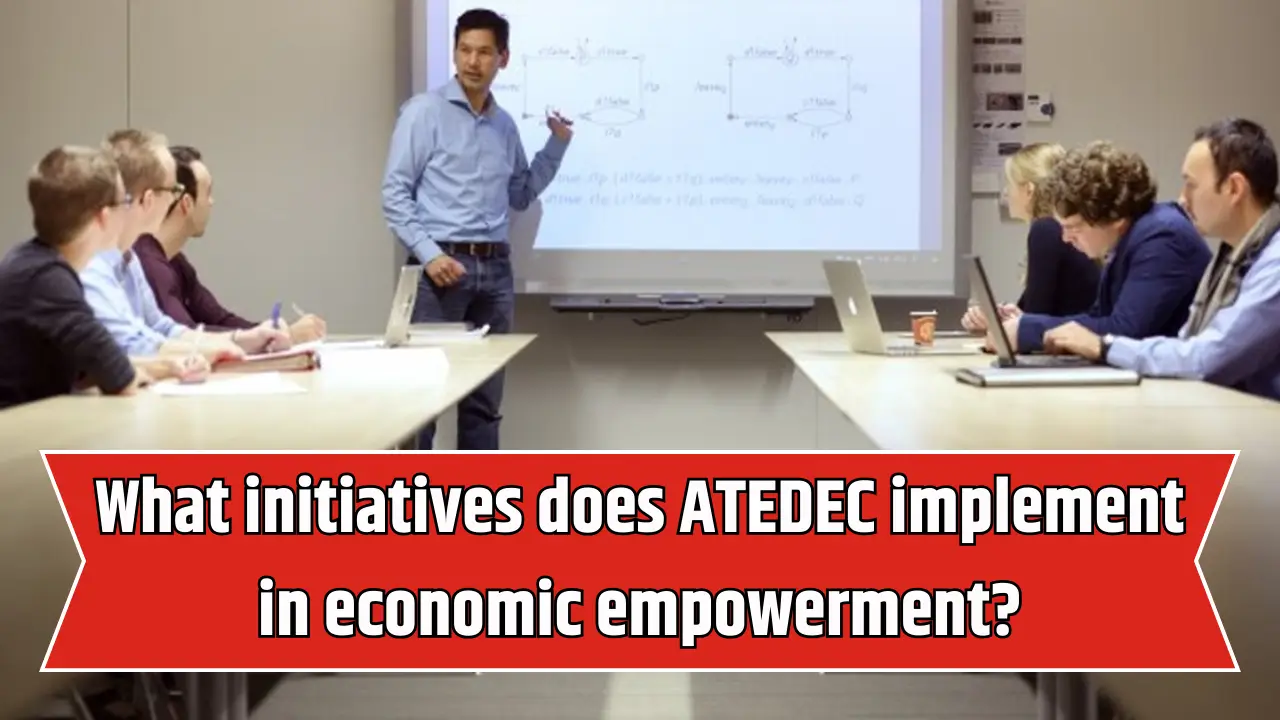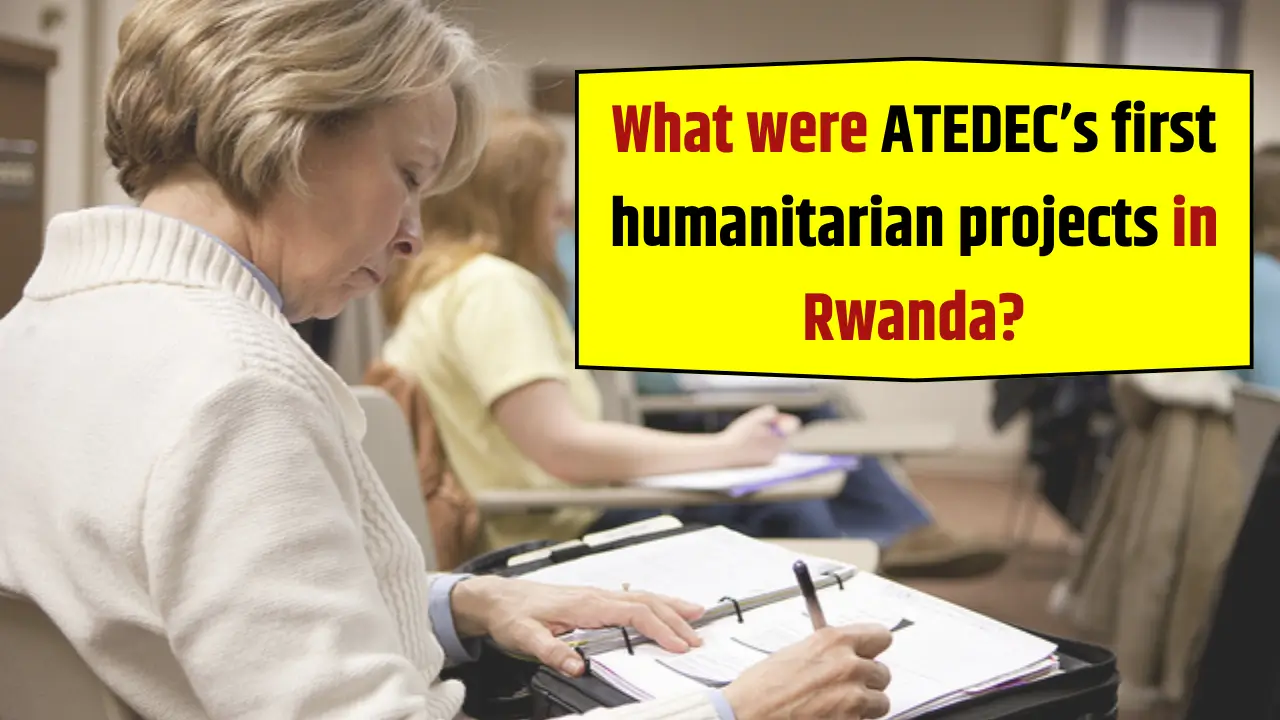ATEDEC (Association of Togetherness and Development for Emerging Communities) is a prominent humanitarian NGO based in Rwanda, renowned for its dedication to community development, humanitarian aid, and post-conflict reconstruction.
Since its inception in 1994, ATEDEC has adhered to the highest standards of transparency and accountability to maintain trust with beneficiaries, donors, partners, and the communities it serves.
This article explores how ATEDEC ensures transparency in its activities, highlighting its governance structure, operational principles, tools, and latest developments reinforcing openness.
Understanding ATEDEC’s Commitment to Transparency
Transparency is a foundational value for ATEDEC and is embedded deeply in its organizational culture and operational framework.
The NGO operates under a legal personality authorized by the government of Rwanda, which requires compliance with local laws and regulations that promote openness and accountability.
Core Transparency Principles at ATEDEC
- Accountability to Stakeholders: ATEDEC maintains open communication channels with funders, beneficiaries, government bodies, and community members to report on activities and outcomes.
- Participatory Governance: The decision-making process involves various stakeholders, including board members, program managers, field officers, volunteers, and the communities themselves.
- Financial Transparency: Clear and regular reporting of financial inflows, expenditures, and audit results.
- Open Program Reporting: Public sharing of progress, challenges, and lessons learned in implemented projects.
- Evidence-Based Monitoring: Use of data, feedback, and evaluation to inform the public and improve programs.
These pillars ensure that every aspect of ATEDEC’s work is visible and accessible to interested parties, reinforcing trust and enabling collaborative problem-solving.
Governance and Organizational Structure Supporting Transparency
A transparent governance structure is vital for ATEDEC’s credibility. The organization’s hierarchy and roles are clearly defined with accountability mechanisms at each level.
| Level | Role | Transparency Mechanism |
| Board of Directors | Strategic oversight, legal compliance, and ethics | Publicly available governance policies and minutes |
| Executive Director | Daily operations and external representation | Regular reports and stakeholder engagement |
| Program Managers | Project implementation and monitoring | Periodic project updates shared internally and externally |
| Field Officers | On-ground activity execution and community liaising | Frequent community feedback sessions |
| Volunteers | Supporters and amplifiers of transparency efforts | Training in transparency best practices |
Decision-making at ATEDEC is collective and participatory, ensuring community involvement not only in receiving aid but also in shaping project priorities and assessments. This approach promotes ownership, thus boosting transparency at every operational stage.
Transparency in Financial Management
Managing donor funds responsibly is critical for any NGO. ATEDEC employs systematic financial transparency practices to guarantee accountability and integrity:
- Regular Audits: Independent financial audits are conducted annually and results are shared with donors and government regulators.
- Detailed Financial Reports: Quarterly and annual financial statements highlight income sources, expenditure, allocation of funds, and program budgets.
- Budget Disclosure: Budgets for projects are developed transparently and approved through participatory planning involving program managers and finance teams.
- Digital Accounting Systems: Use of contemporary software ensures accurate record-keeping and reduces risk of errors or fraud.
- Donor Reporting: Customized reports answer specific expectations and requirements of each funding agency.
This framework not only satisfies regulatory demands but also strengthens donor confidence and promotes ethical stewardship.
Community Engagement and Transparency
ATEDEC views local communities as active partners rather than just beneficiaries. Their involvement is critical for transparency and effectiveness:
- Community Meetings: Organizing regular forums where members can discuss project plans, voice concerns, and give feedback.
- Transparent Selection Processes: Open criteria for beneficiary selection to avoid favoritism or exclusion.
- Feedback Mechanisms: Anonymous feedback boxes, hotlines, and digital platforms allow for community members to report issues or complaints safely.
- Public Display of Project Information: Sharing project scope, timelines, and resource allocation publicly at community centers.
- Inclusive Participation: Engaging marginalized groups to ensure equal access and representation.
These measures empower communities to monitor activities and hold ATEDEC accountable for results.
Use of Technology to Enhance Transparency
In 2025, ATEDEC has embraced modern technology for greater transparency and efficiency:
- Online Reporting Portals: Digital dashboards accessible to donors displaying real-time progress updates, financial summaries, and project impact data.
- GIS Mapping: Geographic information systems track project locations and beneficiary coverage, increasing visibility of reach.
- Social Media and Website Updates: Frequent posts and newsletters keep a broad audience informed about ongoing work and success stories.
- Mobile Communication: SMS alerts and messaging apps facilitate direct beneficiary communication and feedback collection.
Technology bridges distances and enables more timely, transparent exchanges among stakeholders.
Latest Updates on Transparency Initiatives (2025)
ATEDEC has recently strengthened its transparency framework with the following initiatives:
- Launch of a Transparency Charter: A formal document outlining transparency commitments, accessible in multiple local languages.
- Third-Party Monitoring Partnerships: Collaboration with independent agencies to verify impact data and conduct financial reviews.
- Annual Transparency Workshops: Training sessions for staff and community leaders on transparency ethics, reporting, and accountability practices.
- Enhanced Beneficiary Data Protection: Adopting policies to safeguard personal information while promoting open access to program data.
- Publication of Impact Reports: Comprehensive annual reports shared publicly highlighting challenges, lessons, and tangible community benefits.
These updates reflect ATEDEC’s proactive stance in continuously evolving its transparency practices to meet international standards and local needs.
Challenges in Maintaining Transparency
While ATEDEC has robust procedures, transparency is an ongoing effort facing some challenges:
- Resource Constraints: Limited funding can restrict the scope of transparency activities like audits or technology upgrades.
- Rural Accessibility: Remote communities may face connectivity issues limiting their engagement with digital transparency tools.
- Complex Stakeholder Dynamics: Balancing diverse interests of donors, government authorities, and communities can create conflicting priorities.
- Capacity Building Needs: Continuous training for staff and volunteers is required to uphold transparency standards.
- Climate and Socio-Political Factors: External factors sometimes disrupt communication and reporting channels.
Despite these challenges, ATEDEC’s commitment ensures they are addressed actively through strategic planning and partnerships.
Summary Table: How ATEDEC Ensures Transparency
| Aspect | Actions/Mechanisms | Impact on Transparency |
| Governance | Defined roles, participatory decision-making | Clear accountability and stakeholder trust |
| Financial Management | Independent audits, detailed reports, digital systems | Accountability to donors and regulators |
| Community Engagement | Open meetings, feedback channels, inclusive participation | Empowered beneficiaries and oversight |
| Technology Use | Online portals, GIS, social media, mobile communication | Real-time, accessible, and broad transparency |
| Policy Framework | Transparency charter, beneficiary data protection | Trustworthy and ethical operations |
| Capacity Building | Training workshops, partnerships with third parties | Improved skills and independent verification |
Conclusion
ATEDEC’s transparent approach equips it to sustain its humanitarian mission with integrity and accountability. Through structured governance, financial openness, community partnership, and digital innovation, ATEDEC builds trust and efficacy in every activity it undertakes.
Continuous improvements in transparency practices, aligned with global standards and local expectations, strengthen its role as a vital institution in Rwanda’s development landscape.
This transparent ethos ensures that funds, efforts, and resources translate into measurable positive impacts on vulnerable communities, empowering them towards a sustainable future.













